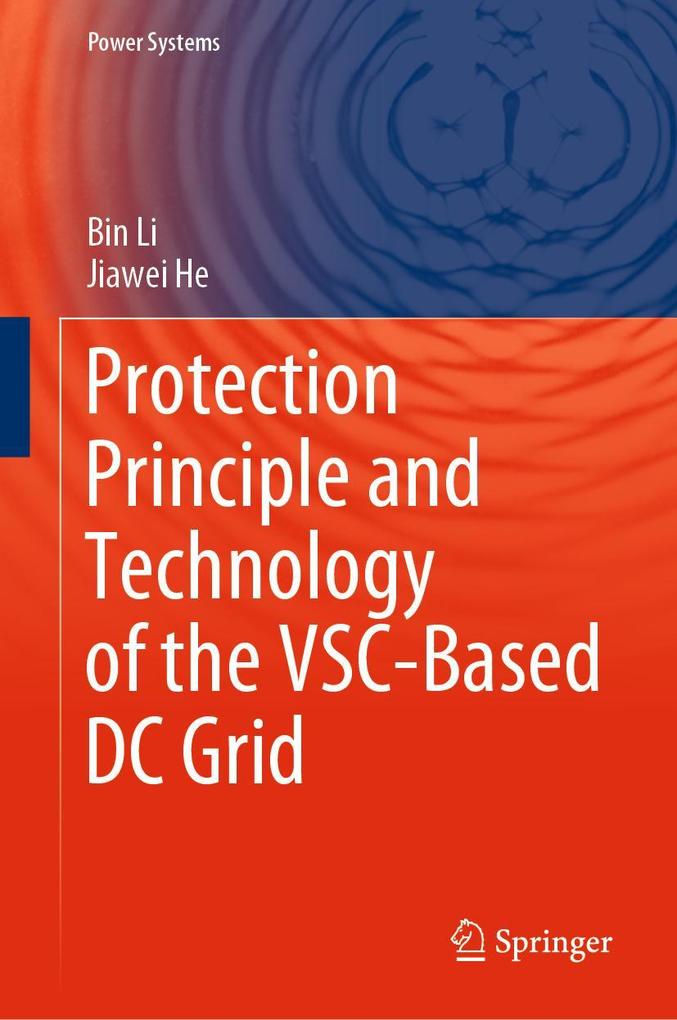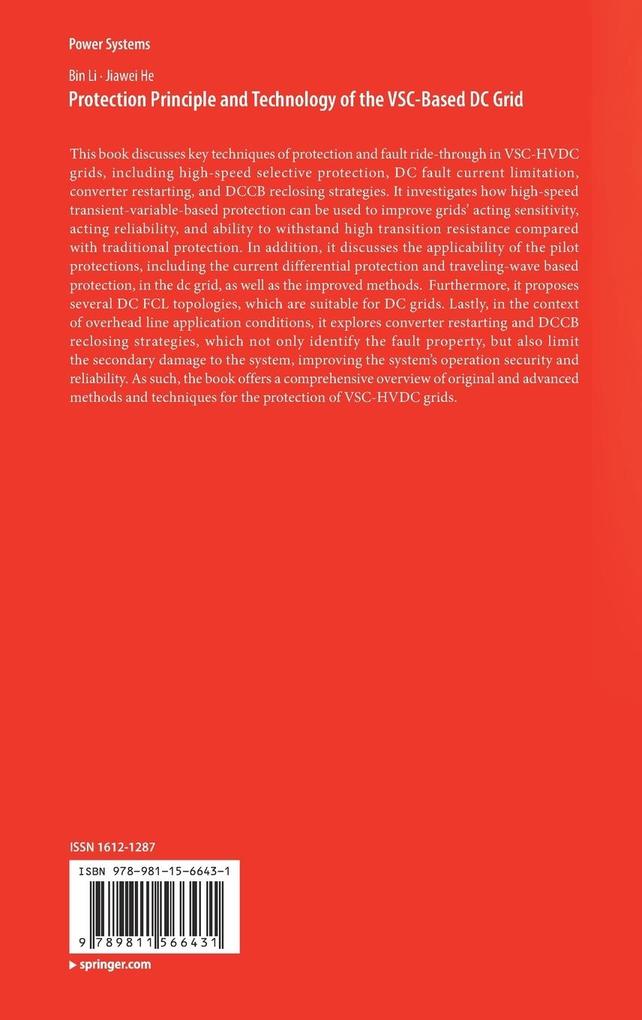
Zustellung: Mo, 23.06. - Do, 26.06.
Versand in 1-2 Wochen
VersandkostenfreiBestellen & in Filiale abholen:
This book discusses key techniques of protection and fault ride-through in VSC-HVDC grids, including high-speed selective protection, DC fault current limitation, converter restarting, and DCCB reclosing strategies. It investigates how high-speed transient-variable-based protection can be used to improve grids' acting sensitivity, acting reliability, and ability to withstand high transition resistance compared with traditional protection. In addition, it discusses the applicability of the pilot protections, including the current differential protection and travelign-wave based protection, in the dc grid, as well as the improved methods. Furthermore, it proposes several DC FCL topologies, which are suitable for DC grids. Lastly, in the context of overhead line application conditions, it explores converter restarting and DCCB reclosing strategies, which not only identify the fault property, but also limit the secondary damage to the system, improving the system's operation security and reliability. As such, the book offers a comprehensive overview of original and advanced methods and techniques for the protection of VSC-HVDC grids.
Inhaltsverzeichnis
Introduction. - Working Principle and Basis Control Strategy of the VSC-HVDC Grid. - DC Fault Characteristics of the VSC-HVDC System. - High-speed Single-ended DC Line Protection for the VSC-HVDC Grid. - High-speed Differential Protection for the VSC-HVDC Grid. - Traveling-wave based Direction Protection for the VSC-HVDC Grid. - DC Fault Current Limiting Technique based on the H-bridge Topology. - DC Fault Current Limiting Technique based on the Current Commutation. - Restart Control Strategy for the MMC-based HVDC System. - The DCCB Reclosing Strategy in VSC-HVDC Grid.
Produktdetails
Erscheinungsdatum
14. August 2020
Sprache
englisch
Auflage
1st edition 2020
Seitenanzahl
284
Reihe
Power Systems
Autor/Autorin
Bin Li, Jiawei He
Verlag/Hersteller
Originaltitel
Produktart
gebunden
Abbildungen
X, 274 p. 182 illus., 130 illus. in color.
Gewicht
594 g
Größe (L/B/H)
241/160/21 mm
ISBN
9789811566431
Entdecken Sie mehr
Bewertungen
0 Bewertungen
Es wurden noch keine Bewertungen abgegeben. Schreiben Sie die erste Bewertung zu "Protection Principle and Technology of the VSC-Based DC Grid" und helfen Sie damit anderen bei der Kaufentscheidung.










